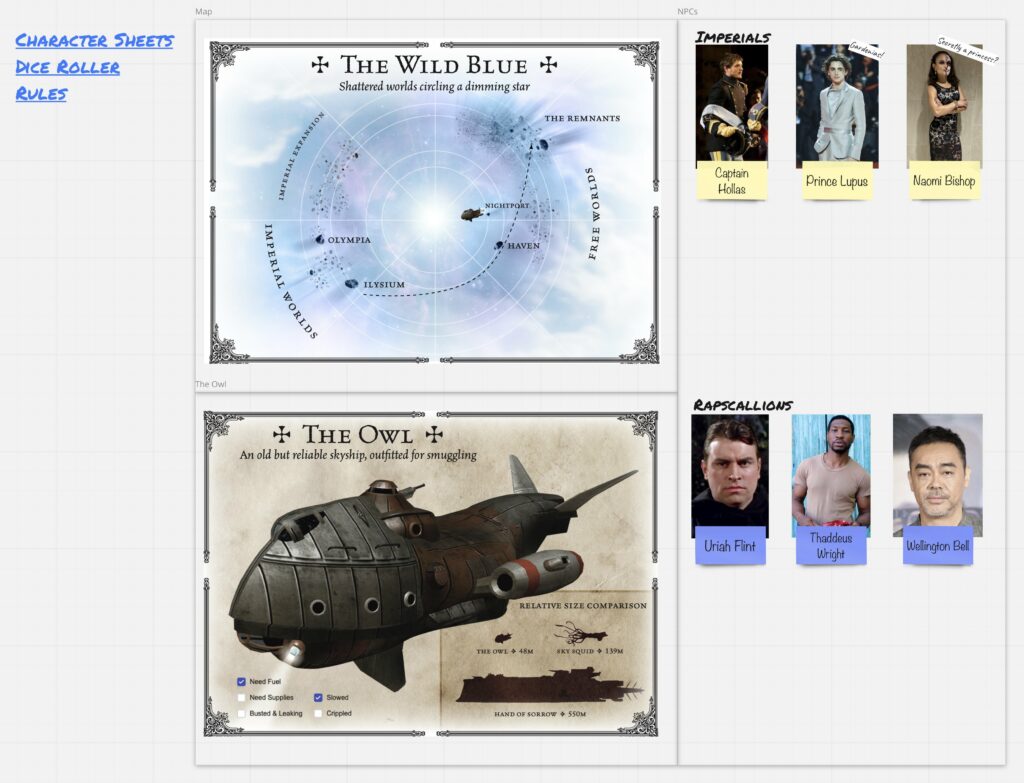This post was prompted by a recent Rob Donoghue tweet. To save you a click, he’s arguing that most RPGs have bad endgames: there’s no set process for what happens at the end of a game.
I recently finished up a Lady Blackbird game, and yep, there’s nothing explaining how to finish up the game. I mean, sure, the PCs achieve their goals probably, and perhaps those goals have changed over time, but. Look at it this way: Lady Blackbird explains exactly how to start a game, with situational advice and a solid reason to act. Nothing much on endings.
Thus, Lady Blackbird Montage. This isn’t exactly how I ended my game but it’s how I might have done it if I’d taken a bit longer to think about it.
“OK, build one final roll! You’re going to be narrating the bit in the credits where the voice over explains what your character does next in their life, so pick a trait and tags that reflect what you’d like to narrate. No dice from the dice pool, sorry. You can get an assist die from other characters if you both expect them to be spending a long time in each other’s presence, for whatever reason.
“For each success, you can narrate one cool thing that happens to your character. For every two failures, rounded down, you have to narrate one problem. You can remove a problem if you also drop a cool thing. So if you had three successes and two failures, you’d narrate three cool things and one problem, or you could do the trade and narrate two cool things and no problems.”
This is basically lifted from Fiasco but that’s a good game.
